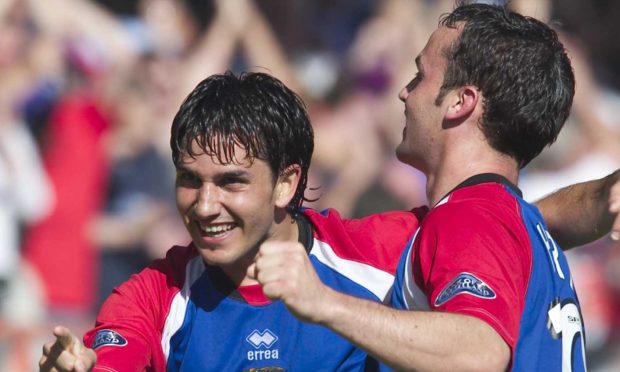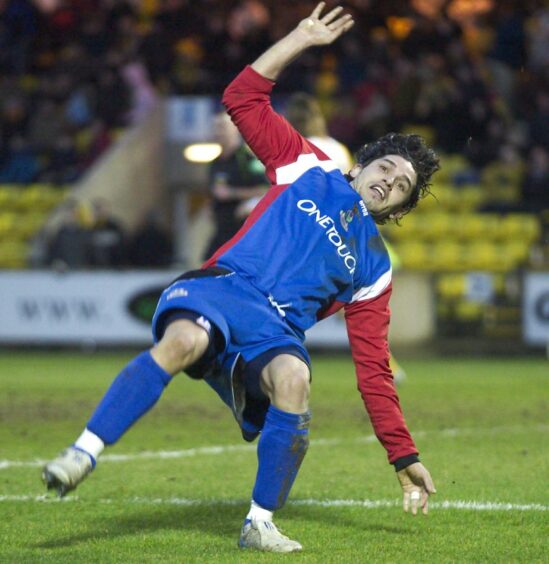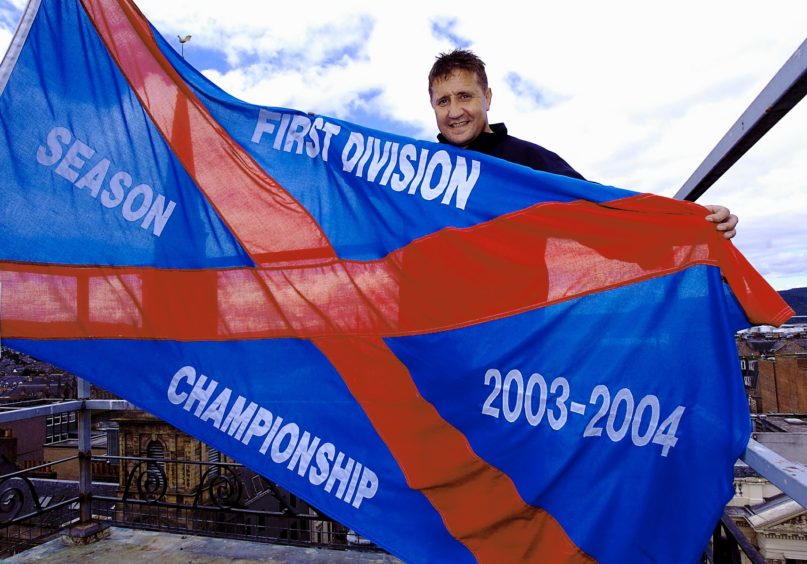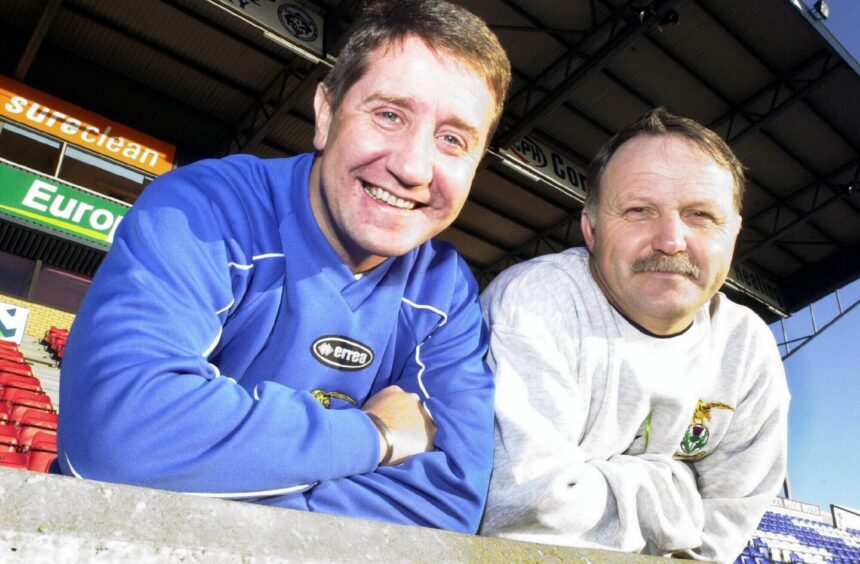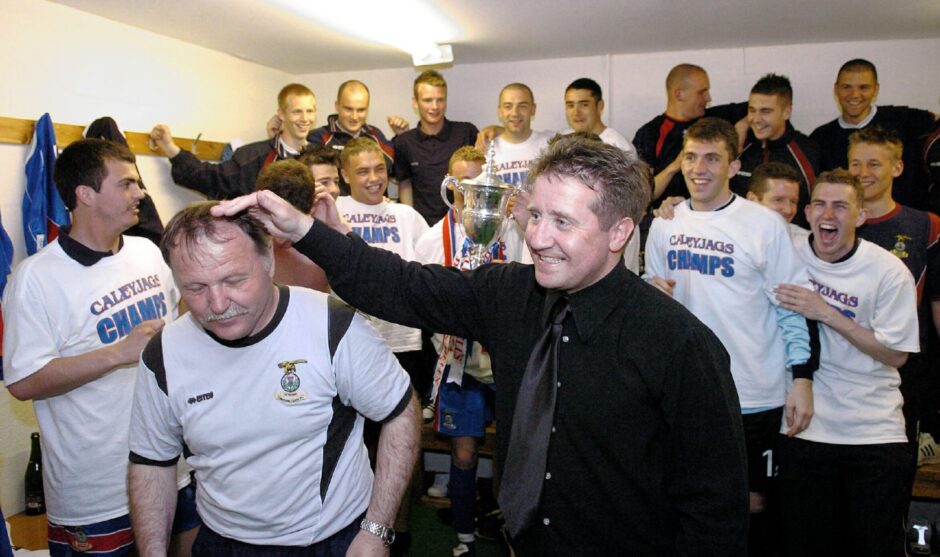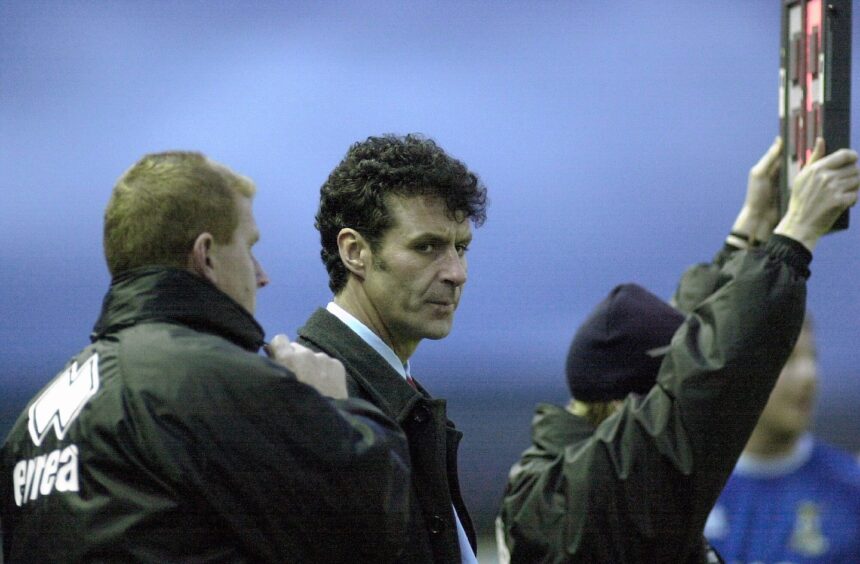John Robertson, who led Caley Thistle into the SPL 20 years ago this month, revealed how signing ex-Barcelona starlet Juanjo worked a treat.
The former Inverness boss, along with assistant Donald Park, completed the sterling work of predecessors Steve Paterson and Duncan Shearer to guide the then-10-year-old club into the top-flight. It was quite the story.
Months after ‘helicopter Saturday’ saw ICT stave off the challenge of Clyde to win the First Division by beating St Johnstone in Inverness, they were gearing up for their SPL (Scottish Premier League) bow away to Livingston.
They lost 3-0 in West Lothian, but the bigger picture was they were playing their home fixtures at Aberdeen’s Pittodrie as Caledonian Stadium didn’t have the required number of seats to be compliant.
After winning Division One, captain Bobby Mann and attacking midfielder David Bingham moved on and evergreen Charlie Christie and free-scoring forward Paul Ritchie retired.
Juanjo wanted to play for Inverness
Former Hearts star Robertson explained how he knew, hampered by playing at Pittodrie, the Inverness fans needed a star man to raise the bar within his side.
He said: “Out of the blue, Hearts released Juanjo. He was such a skillful player, but also a personality. I said to (director of football) Graeme Bennett, think about the headlines if we sign Juanjo.
“Caley Thistle sign ex-Barcelona player. Okay, he only played once as a substitute for Barcelona, but he’d played for Barcelona. I wanted to sign him.
“I said to Juanjo it was all about staying up, especially as we were playing our games in Aberdeen. He said, ‘I don’t care how much (you’re paying in wages), I want to come and play for you and Inverness’.
“Fans were already excited because we were going into the SPL, but they were not getting to see Celtic, Rangers, Hearts, Hibs and Aberdeen at the Caledonian Stadium. So, bringing in Juanjo made up for it a wee bit, because he brought excitement to the Inverness side.
“We also signed quality players such as Darren Dods, as we needed guys with SPL experience. Darren wanted to show people he shouldn’t have been released by Hibs. He had plenty to offer.
“We had very good pros in Ross Tokely, Stuart McCaffrey, Stuart Golabek, Russell Duncan and Roy McBain, who could do the job for us. We had decent youngsters and brought in David Proctor, Liam Fox and Darran Thomson. They were terrific for us. In those days, you needed three under-21s in your squad.”
Merger move was the right decision
It’s clear that Robertson is proud of playing his part in taking the Highlanders to Scottish football’s top table two decades ago.
However, he stressed the deal-makers of the merger between Inverness Caledonian and Inverness Thistle, who deserve credit for setting the ball rolling.
He said: “For Inverness to achieve the distinction of reaching the SPL just 10 years after their birth, it showed the people who put the merger together in 1994 that the vision was right.
“I understand the politics and strength of feeling at the time of the merger, but winning the First Division proved it was the right thing to do.
“To be the manager who achieved that, along with Donald Park next to me, was brilliant, and for all the players.
“I must say, it was done on the back of the work of Steve Paterson and Duncan Shearer. He done an unbelievable job in building a team getting closer and closer. It just needed a sprinkling of gold dust from when Donald and I came in to make the difference.”
Robertson ‘wrong’ to question board
Robertson explained, as an up-and-coming boss, he made a misjudgment when it came to challenging the board over whether they’d bite the bullet and agree a switch to Pittodrie to fulfil their top-flight ambitions as the Caledonian Stadium didn’t have the required 10,000 seats at that point.
He said: “I recall saying something in the press, which was wrong but right at the same time.
“The rumour was our board didn’t want us to go up to the SPL. I challenged them by saying the players have done it, the fans have done it and we’ve been through the leagues. I said ‘give us an opportunity to play in the SPL’. You never know when it will happen again.
“We had an SPL fan-base with a SPL team. And I said ‘let’s see if we have a SPL board here at Inverness’.
“I was a young manager, in only my second season, and I shouldn’t have said that, and I apologise to the board members – 20 years too late! I was just caught up in the emotion of it all.
“To be fair, the club put the money where their mouths were and backed us to the tune of about £30,000 a game to play at Pittodrie.”
One of the greatest achievements of a newly-promoted club – Robertson
Only nine league games in 2004-2005 were played at the Caledonian Stadium from January onwards when ex-chairman David Sutherland’s building giants Tulloch rapidly built two stands to have an all-seated venue.
In November 2004, Robertson and Park were lured away by Hearts and Robbo pointed to Craig Brewster to replace him as he did as the player/manager, striking up an attack with Graham Bayne.
For ICT to go on to secure eighth place in the SPL after playing the vast majority of games away from the Highlands, Robertson said: “I still think that remains one of the greatest achievements from a newly-promoted club.
“I think at one stage they were one goal away from being in the top six, which is incredible given nearly all fixtures were effectively away from home.
“So many people at the club worked so hard, from the directors, the secretary Jimmy Falconer, and a guy like Charlie Christie, who had played from the Highland League into playing for Caley Thistle right through the leagues, it was brilliant to see.
“Those two years were sensational when you consider we achieved what we did along with two back-to-back Scottish Cup semi-finals, where we were unlucky in both semis. It was a brilliant time for the football club, and it seems bizarre to me that it was 20 years ago.”
‘No party here’ message inspired Inverness ahead of Clyde crunch
Spinning the story back a couple of months to when ICT turned the First Division title race on its head, Robertson revealed how he inspired Inverness to ensure Clyde were not going to be champions at their expense.
He said: “The big game was our penultimate one against Clyde at Broadwood.
“We went there two points behind. Normally I’d have something up my sleeve about how we’d go about it, but I said to Parky I wasn’t sure. He told me to name the team and don’t worry about it.
“When the lads came back in (from their warm-up), I said I’d just been in the foyer and the league trophy was there with red, black and white ribbons on it.
“Dougie Donnelly, the celebrity Clyde fan, was there, and they knew if they won that game, they’d win the league. The SPL and SFL guys were there, there was an expectation of a trophy presentation after the game.
“I asked the players who won the league a few years ago. It was St Mirren and they beat Inverness to win it.
“Two years previously, Partick Thistle won the title and beat Caley Thistle. And I reminded them, the year before, Falkirk won the title after playing Inverness.
“I told them right there, three words: ‘no party here’.
“I told the players we’d beat Clyde and take this title back to our place. We’d take care of what happened next week if we got the victory.
“We were brilliant in the first half. It was 0-0 at half-time then we got ahead before conceding a dodgy penalty for the equaliser. We scored again to win 2-1 and it was thoroughly deserved.
“I didn’t admit it at the time, but we knew we’d go all the way and win that league.”
